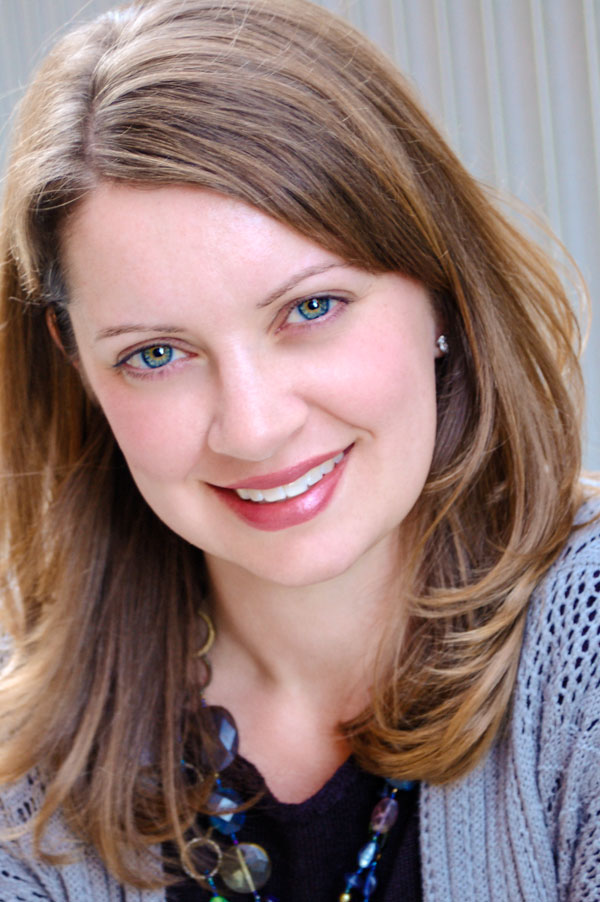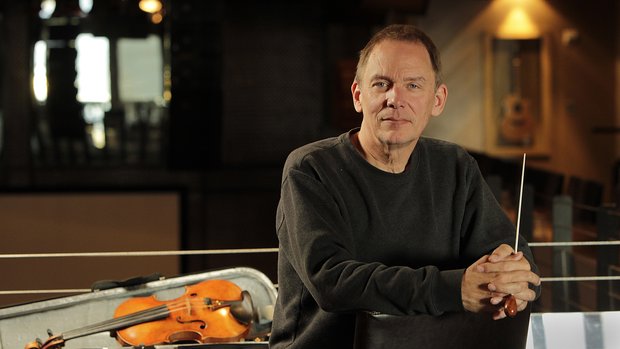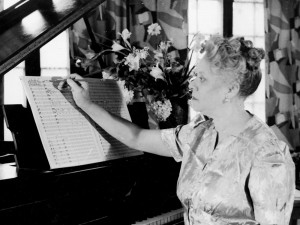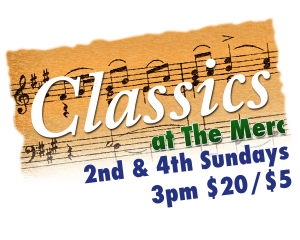Saturday, November 20, 2021, 3:00 p.m.
Gershwin Performing Arts Center | Murrieta Mesa High School
Today’s Program
Andante moderato (1929) – Florence Price (1887 – 1953)
Juba (from String Quartet in A Minor) – Florence Price
Ancient Airs and Dances, Suite III – Ottorino Respighi (1879 – 1936)
I. Italiana
II. Arie di corte
III. Siciliana
IV. Passacaglia
INTERMISSION
Serenade for Strings, Op. 48, C Major – Pyotr Tchaikovsky (1840-1893)
(Urtext by John Stubbs)
I. Pezzo in forma di sonatina
II. Valse
III. Elegia
IV. Finale (Thema Russo)
Thanks to the Murrieta Valley Unified School District for their support of this concert.
Concessions support the Murrieta Educational Foundation for the Arts.
Gershwin Performing Arts Center requests that all patrons wear face coverings inside the building. Thank you for your cooperation.

Dana Zimbric is marking her 12th season as Artistic Director and Conductor of the California Chamber Orchestra.
In addition to her work with us, she is Associate Conductor of San Diego’s California Ballet, Music Director of the Classics Philharmonic Orchestra, which performs educational programs for San Diego area students, and recently made her conducting debut with the San Diego Symphony.
Dana’s past conducting experience includes positions with the San Diego Youth Symphony, Avante Chamber Orchestra, Orchestra Nova San Diego, and the University of Wisconsin Chamber and Symphony Orchestras.
An accomplished clarinetist, Dana holds a Bachelor of Music in Clarinet Performance and a Master of Music in Orchestral Conducting from the University of Wisconsin. She lives in San Diego with her husband and two young daughters.
Members of the California Chamber Orchestra
Violin I
Kathryn Hatmaker (Concertmaster)
Kenneth Liao
Nicole Sauder
Violin II
Missy Lukin (Principal)
Ai Awata
Batya MacAdam-Somer
Viola
Ethan Pernela (Principal)
Linda Piatt
Cello
Alex Greenbaum (Principal)
Elizabeth Brown
Bass
Kathryn Bradley (Principal)
Personnel Manager and Librarian
Michael Molnau
 All musicians performing in this concert are members of
All musicians performing in this concert are members of
The American Federation of Musicians, Local 325
About John Stubbs

For many seasons, John Stubbs conducted the San Diego Symphony for California Ballet Company productions ranging from ballet standards such as The Nutcracker, Paquita, and Serenade to premieres of new works with music of Bach, Vivaldi, De Falla, Albinoni, George Crumb, and Yoav Talmi. Additionally, Stubbs has led the Colorado Springs Symphony, the Wyoming Symphony, and the San Diego Chamber Orchestra at the re-opening Gala of the historic Balboa Theatre.
Stubbs conducted the world premiere of “ALICE: Re-imagining Wonderland through Dance, Music and Spoken Word,” a collaboration between The Art of Élan and Colette Harding Contemporary Dance Company with a commissioned score by composer Joseph Hallman. Recently Mr. Stubbs traveled to Japan to conduct the full length ballet, “La Bayadere”, for the Ochi International Ballet in Nagoya, Japan.
In addition, Mr. Stubbs is the creator and director of Luscious Noise, an eclectic performance series at local jazz club Anthology, bringing new audiences to classical music through the combination of live music and videos in a hip dinner club setting.
Mr. Stubbs’ Tchaikovsky research has led him to make critical corrections to Tchaikovsky’s Serenade and Nutcracker scores. When not performing, studying, or conducting, Mr. Stubbs enjoys a nice glass of red wine with his wife, and former Prima Ballerina, Denise Dabrowski.
Program Notes
Born in Little Rock, Arkansas, composer Florence Price (1887-1953), displayed genius tendencies early in life. With a music teacher for a mother and a dentist father, Price had her first piano performance at the tender age of 4; her first composition was published at age 11; and by age 14 she had graduated valedictorian of her high school class.

According to the New Yorker, Price sent a letter to conductor Serge Koussevitzky in 1943, writing “My dear Dr. Koussevitzky, To begin with I have two handicaps—those of sex and race. I am a woman; and I have some Negro blood in my veins.” She understood these two factors were handicaps to her career. Koussevitzky ignored her and only the German-born conductor Frederick Stock, Music Director of the Chicago Symphony, took her seriously. Despite her unquestionable music gifts, her musical works were little known during her lifetime, with few exceptions.
In a twist of fate, a number of Price’s musical manuscripts were discovered in a dilapidated house outside the Chicago area. The home had previously been Price’s summer home and in 2009 a couple had purchased the run-down property with plans to renovate. In the attic they found boxes of handwritten musical scores with the name Florence Price. Following research of the name, the couple found that the University of Arkansas already had a collection of her scores in their library. Archivists identified the manuscripts as authentic, and to their delight the cache included dozens of musical works thought to be lost, including Price’s First and Second Violin concerti. This discovery has led to a modern resurgence of Price’s music.
During today’s program the California Chamber Orchestra will perform two movements from Price’s string quartets.
Andante Moderato is an arrangement for string orchestra of the second movement of Price’s String Quartet in G Major, written 1929. The beautiful work is a prime example of Price’s melodic prowess. The movement is in ABA form. The movement begins, and ends, with a richly legato texture and beautiful harmonies with a hymn-like feel. The middle section takes on a minor bluesy feel with a bouncy baseline.
Juba comes from Price’s String Quartet No. 2. Originally the third movement of the quartet, today we perform an arrangement for string orchestra. The main theme of the third movement is in the style of a Juba dance or hambone, a patently African lively dance that involved body-slapping, foot-stomping, and hand-clapping; this section frames a more relaxed allegretto that is likewise based on African American dance idioms.
Italian composer Ottorino Respighi (1879-1936) was both a scholar of early music and an innovative modern composer. He spent two years as a student of Nikolay Rimsky-Korsakov, a member of “The Five” (an exclusive group of Russian composers which also included Balakirev, Mussorgsky, and Borodin). Rimsky-Korsakov was known for his use of tonal color and imaginative music (i.e. Flight of the Bumblebee), and certainly Respighi also had a knack for creating unique tonal color in his compositions.
Composed in 1931, Respighi’s Ancient Airs and Dances, Suite III, for string orchestra is a collection of arrangements of 17th century Italian and French lute music. Each movement is based on old melodies with Respighi’s modern accompaniment added.
The four movement suite begins with an Andantino, which features an anonymous Italian popular melody from the 17th century. The second movement, is a collection of 6 distinct court songs (Arie di corte) by French lutenist and composer Jean-Baptiste Bresard, born in 1567. The third movement, Siciliana, is based on another anonymous Italian melody from the 17th century. The final movement, Passacaglia, is built around a 1692 work by 17th century Italian guitarist and composer Ludivico Roncalli.

Russian composer Pyotr Ilyich Tchaikovsky began piano lessons at age 5, and though he showed early talent in music, his parents discouraged him from being too serious about a musical career. Instead he was encouraged to study law. By age 10 he was attending a boarding school in St. Petersburg and at age 19 Tchaikovsky was working as a bureau clerk with the Ministry of Justice. Though Tchaikovsky had been obedient to his parents, the call of musical composition was too loud to ignore.
While still working as a bureau clerk, Tchaikovsky began music lessons at the Russian Musical Society, and within a few months he had enrolled in the newly founded St. Petersburg Conservatory and became one of the school’s first composition students. In 1863 he moved to Moscow and began working as a professor of harmony at the Moscow Conservatory. Tchaikovsky had a very brief marriage to a young music student named Antonina Milyukova in 1877. Tchaikovsky abandoned the marriage within weeks of the wedding, had a nervous breakdown (including a suicide attempt) and fled the country.
Tchaikovsky composed his Serenade in 1880 and it premiered in St. Petersburg in the fall of 1881. Tchaikovsky’s famous 1812 Overture, commissioned for the unveiling of a Pushkin memorial in Moscow, was among the other works he wrote during this time.
The Serenade has four movements, and in many respects is modeled after a traditional symphony. The opening movement is an homage to Tchaikovsky’s favorite composer, W.A. Mozart, and subtitled, “Piece in form of a sonatina.”
The second movement, a Waltz, was such an audience favorite that during the piece’s premiere those in attendance asked for the movement to be repeated. The Waltz begins in a very simple fashion with a straightforward melody and off-beat accompaniment. From the onset, one can imagine beautiful dancers waltzing across the ballroom floor.
In stark stylistic contrast to the Waltz, the third movement is a slow Elegy based on the same ascending scale Tchaikovsky used for his Waltz. This Elegy is full of emotion, with a dramatic musical romance played out between the violins and cello.
Tchaikovsky’s finale (“Russian Theme”) draws from two Folk melodies. It begins quietly, as to not disturb the audience after the third movement, and slowly builds to the full-spirit Russian theme. When we arrive at the full running of the movement, listening (and playing) this kind of music makes you feel grateful to be alive and kicking.




